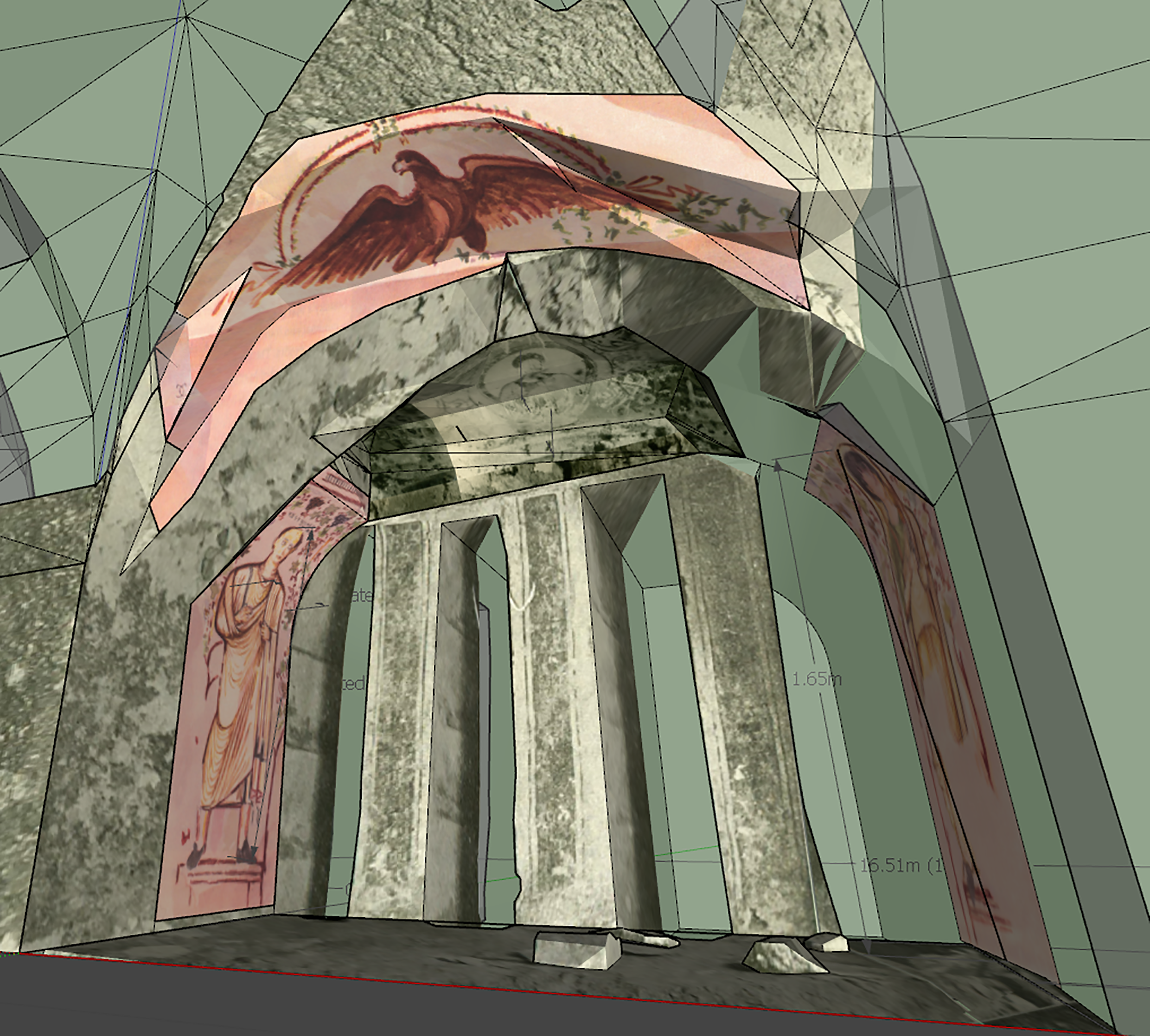Archive Archaeology in Palmyra, Syria: A new 3D reconstruction of the Tomb of Ḥairan
New publication by Olympia Bobou, Nathalia B. Kristensen, Scott McAvoy and Rubina Raja.

Bobou, O., Kristensen, N.B., McAvoy, S. & Raja, R. (2020). "Archive Archaeology in Palmyra, Syria: A new 3D reconstruction of the Tomb of Ḥairan". Digital Applications in Archaeology and Cultural Heritage 19, DOI: https://doi.org/10.1016/j.daach.2020.e00164.
The team behind the Palmyra Portrait Project publishes hitherto unpublished excavation dairies and archival material belonging to the Danish archaeologist Harald Ingholt. Research into the material has resulted in an interactive, annotated, web-based digital model of the so-called tomb of Ḥairan.
A new 3D reconstruction
Since 2012, the Palmyra Portrait Project, directed by professor Rubina Raja (Aarhus University) and funded by the Carlsberg Foundation, has compiled the largest corpus of funerary portraits outside of Rome: those of Palmyra, with over 3700 portraits documented so far. Another outcome is the digitization of the excavation diaries of the Danish archaeologist Harald Ingholt as well as his archive sheets with commentaries about numerous of the portraits.
Based on this largely unexplored material, the Palmyra Portrait Project together with expert in visualization techniques including 3D modelling Scott McAvoy (University of California, Digital Media Lab, San Diego Library) have produced an interactive, annotated, web-based digital model of the so-called tomb of Ḥairan in Palmyra in modern-day Syria. This monumental underground tomb was excavated by Ingholt and documented in his until now unpublished excavation diaries. In a new co-authored article, Ingholt’s diaries and archival sheets are presented next to a detailed analysis of the methods and techniques used for the 3D reconstruction. The 3D model, which was made available as Open Data earlier this year, gives a new understanding of the tomb’s interior and overall layout as well as the relation between painted decoration and architectural surfaces.
The publication highlights the importance of collaboration between experts in different fields. Combining archaeological research and archival material with new technologies such as 3D modelling will help bring forth new knowledge about cultural heritage from ancient sites such as Palmyra. The future work with Ingholt’s archive material will be undertaken by the project Archive Archaeology: Preserving and Sharing Palmyra’s Cultural Heritage through Harald Ingholt’s Digital Archive funded by the ALIPH Foundation.
Further links
- The Palmyra Portrait Project
- Archive Archaeology: Preserving and Sharing Palmyra’s Cultural Heritage through Harald Ingholt’s Digital Archive
- 3D model available on Sketchfab
